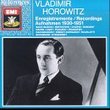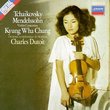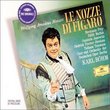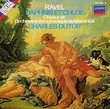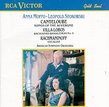| All Artists: Brahms, Toscanini, NBC Symphony, Horowitz Title: Toscanini Conducts Brahms Members Wishing: 0 Total Copies: 0 Label: Music & Arts Program Original Release Date: 1/1/2006 Release Date: 1/1/2006 Genre: Classical Styles: Forms & Genres, Concertos, Historical Periods, Modern, 20th, & 21st Century, Instruments, Keyboard, Symphonies Number of Discs: 1 SwapaCD Credits: 1 UPC: 017685107726 |
Search - Brahms, Toscanini, NBC Symphony :: Toscanini Conducts Brahms
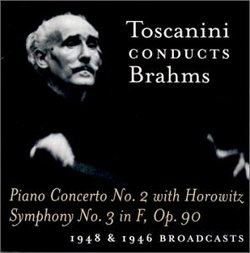 | Brahms, Toscanini, NBC Symphony Toscanini Conducts Brahms Genre: Classical
Music & Arts baits Toscanini conducts Brahms with the best-sounding transfer to date of the 1948 broadcast of the Maestro's collaboration with Vladimir Horowitz in the Piano Concerto No. 2. This is not the famous 1940 ... more » |
Larger Image |
CD DetailsSynopsis
Amazon.com Music & Arts baits Toscanini conducts Brahms with the best-sounding transfer to date of the 1948 broadcast of the Maestro's collaboration with Vladimir Horowitz in the Piano Concerto No. 2. This is not the famous 1940 studio recording, which the pianist later disavowed because--or so Horowitz said--of Toscanini's strict tempos. In this 1948 version, many Horowitz aficionados claim they hear, as Christopher Dyment writes in his liner note, "more freedom," "heightened drama," and "a more inflected approach throughout, all betokening [Horowitz's] greater confidence in his own powers." Truth to tell, the performances are virtually identical, with the laurel going to the earlier one because of its better sonics and more lifelike balances, and because pianist and conductor achieve a level of supple execution and sublime expression in the Andante that they failed to match eight years later. The disc is completed by the conductor's 1946 broadcast of Brahms's Symphony No. 3--the symphony that tormented Toscanini more than any other. In his 1952 commercial recordings of the four Brahms symphonies, the Third stands out as the only failure. The interpretive crux of the Brahms Third is making it flow--sometimes placidly, sometimes turbulently--naturally and inevitably toward the finale. Toscanini's live performances suggest that he jinxed himself--in the recording studio, at any rate--by worrying too much about the symphony's architectonic complexity. Like his five other surviving broadcasts of the Third Symphony--from New York in 1938, 1941, 1942, 1948, and from London in 1952--the one from 1946 possesses a singing line, enormous tensile strength, and luscious phrasing at every turn, never failing to illuminate this most labyrinthine of Brahms's orchestral works. --Stephen Wigler Similarly Requested CDs
|
CD ReviewsTop Drawer Brahms from Toscanini & Horowitz Hank Drake | Cleveland, OH United States | 04/09/2001 (5 out of 5 stars) "It's heartening to see the considerable number of historical recordings surfacing during this digital age.Horowitz and Toscanini had many divergent views on music and performance. Truth be told, if Horowitz hadn't been Toscanini's son-in-law, they probalby would not have performed together as often as they did. The Italian Maestro was a notoriously inflexible accompanist, which probably accounts for the small amount of repeat business he received from top solists. However, for all their musical disagreements, Horowitz and Toscanini were united in their desire to strip from Brahms the flabby, muddy performance style which has been fashinable in some circles. Both the Concerto and Symphony on the CD feature dazzling clarity of execution, where harmonic strands are transparent.This performance of the concerto, recorded in 1948, has been issued several times on CD, starting in the late 1980s. The sonics in this new remastering are far superior to the earlier issue on Stadivarious, which had many distracting skips, bumps and was poorly balanced. The sound here is smoother, with deeper bass and less shrill treble. As for the performance, I do not agree with the Amazon reviewer's comments that the 1940 studio recording is to be preferred over this one. The sound in the 1948 version has greater dynamic impact, although the piano is overbalanced. Perhaps the sound increases the impression that Horowitz seems more assertive here than in the earlier version, where he was largely content to march to the beat of Toscanini's drum. Tempos are mostly the same here, except in the Andante, which seems somewhat rushed. Horowitz was no great fan of this concerto, but many of the best aspects of his playing are heard here--the clarity, the rhythmic drive, the powerful left hand--all these make this a Brahms Second to be reckoned with. Only one regret here: by 1948, NBC had begun showing a few of Toscanini's concerts on television. How sad they never saw fit to televise this one--it would have been priceless.The Third Symphony is also a glorious performance. Again, the clarity, both harmonic and structural are the antithesis of the German approach to Brahms. Toscanini takes the repeat in the first movement, but for once is doesn't seem redundant. The flowing Andante is followed by a yearning third movement. Toscanini articulates the tricky syncopation of the Finale in a way few other conductors could. The 1946 recording is understandably restricted dynamically, but reasonably warm and naturally balanced.Brahms, Toscanini and Horowitz fans would do well to snap this item up ASAP."
|

 Track Listings (8) - Disc #1
Track Listings (8) - Disc #1